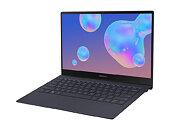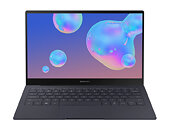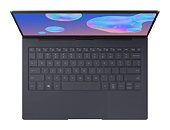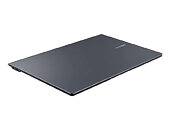Monday, May 25th 2020

First Intel "Lakefield" Powered Samsung Galaxy Book S Listed on the Company's Canadian Store
One of the first Intel "Lakefield" heterogenous processor-powered devices, a Samsung Galaxy Book S model, is listed by Samsung on its Canadian online store. The Galaxy Book series typically consists of Arm-powered clamshell/convertible notebooks that use Windows 10 (Arm version). The device in question is a Galaxy Book S 13.3-inch notebook bearing model number NP767XCM-K01CA, and comes in two color trims - "Mercury Gray" and "Earthy Gold."
Under the hood is an Intel Core i5-L16G7 "Lakefield" heterogenous processor that has four "Tremont" low-power cores, and a "Sunny Cove" high-performance cores, in an arrangement rivaling Arm big.LITTLE, the first of many such chips from the company, as it taps into new technologies such as heterogenous cores and advanced Foveros chip packaging to design its future processors. The notebook offers Full HD resolution, 8 GB of RAM, 256 GB or 512 GB of solid-state NVMe storage, 802.11ax 2x2 WLAN, and a 42 Wh battery, possibly with double-digit hour battery life. All of this goes into a 6.2 mm (folded) device weighing under a kilogram.
Source:
NotebookCheck
Under the hood is an Intel Core i5-L16G7 "Lakefield" heterogenous processor that has four "Tremont" low-power cores, and a "Sunny Cove" high-performance cores, in an arrangement rivaling Arm big.LITTLE, the first of many such chips from the company, as it taps into new technologies such as heterogenous cores and advanced Foveros chip packaging to design its future processors. The notebook offers Full HD resolution, 8 GB of RAM, 256 GB or 512 GB of solid-state NVMe storage, 802.11ax 2x2 WLAN, and a 42 Wh battery, possibly with double-digit hour battery life. All of this goes into a 6.2 mm (folded) device weighing under a kilogram.




4 Comments on First Intel "Lakefield" Powered Samsung Galaxy Book S Listed on the Company's Canadian Store
It's quite obvious from the 3.7mm headpone jack and the 8.5mm USB-C port that the "base" is about 5mm thck, the screen is about 5mm thick and there's obviously little feet on the bottom otherwise there's nowhere else for the speakers or cooling intakes to be. So, I'm guessing it's about 11mm thick, which is great but my work X1 is only 15mm thick, 1.1kg, and more importantly it has upfiring speakers, actual ports, and of course a keyboard that doesn't make me want to punch someone. Also, it's not sold on how thin it looks, those just happen to be its dimensions. My more typical personal Lenovo 530s (cheapo 2700U laptop) is only 16.4mm thick and that's not even trying to look thin. It has full USB-A port(s) on both sides, a full-size HDMI and a satisfyingly chonky screen that survives the occasional fall off the sofa.
So yeah, I for one don't care whether a laptop is 900g or 1.1Kg, and I don't care whether it's 10mm thick or 20mm thick. I just want it to be nice to use, nice to look at, nice to listen to, and maybe it would be nice if it still worked after one journey in a rucksack, Samsung. "Thin" just means weak and flexy and trust me, PCBs full of lead-free soldered SMT components don't like flex.
Realistically, Lakefield needs to show the world that Microsoft's scheduler can handle background always-on tasks with the Tremont cores and leave the Sunny-Cove cores for user workloads.
We know Windows scheduler was a dumpster fire back when Zen launched because of game benchmarks showing the difference between letting the scheduler choose a core and manually disabling sub-optimal cores. Hyperthreading also kind of proves that - as long as you still have enough cores, disabling Intel's HT usually improves performance because it stops the stupid windows scheduler from queuing up work on the second thread of an already-busy core despite there being the potential for more performance if that work was sent to a less busy core.
I appreciate it's not a trivial task to solve, but it's certainly one for Microsoft, rather than intel, to solve in the laptop space.